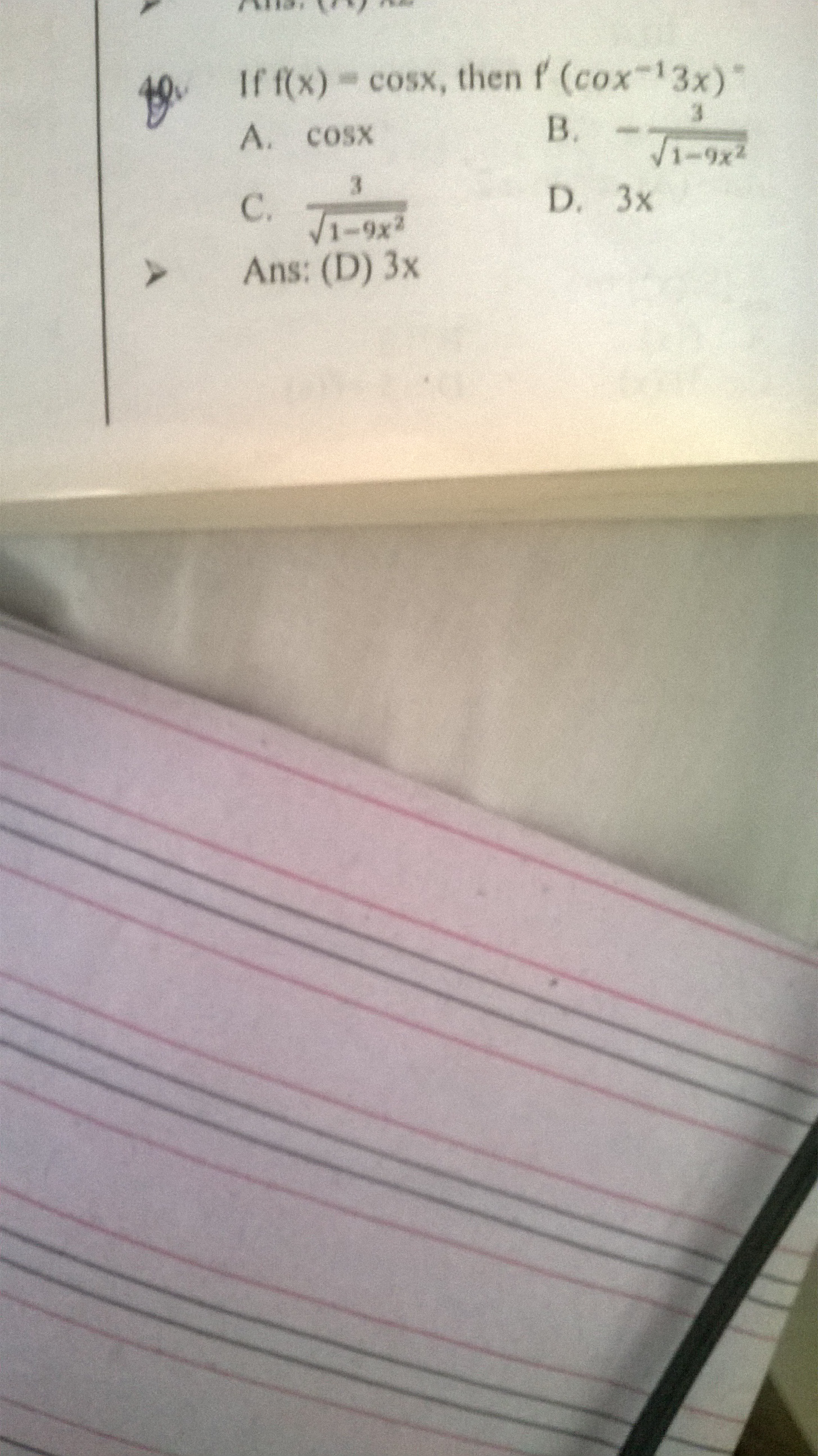#f(x) = cosx#
The picture is a bit difficult for me to read. I can't be sure if there is a "prime" on the #f# and I don't know what #cox^-1 3x# means. I think it is an error for #cos^-1 3x#.
I think we are asked about #f'(cos^-1 3x)# or #f(cos^-1 3x)#.
Now, #cos^-1 3x# is an angle between #0# and #pi# whose cosine is #3x#
If we ask for #f(cos^-1 3x)#, then we are asking for #cos(cos^-1 3x)# which is "the cosine of an angle between #0# and #pi# whose cosine is #3x#".
This is what I cal a self-answering question. "What is the cosine of an angle whose cosine is #3x#?, It is #3x#.
So the answer given, #D.# is the correct answer to #f(cos^-1 3x)#
If we ask about the derivative
#f(x) = cosx#, so #f'(x) = -sinx#
and
#f'(cos^-1 3x) = -sin(cos^-1 3x)#
We want the opposite of the sine of an angle whose cosine is #3x#.
That is: given angle #theta# with #theta# between #0# and #pi#, find #-sin theta#.
We know that #sin^2 theta + cos^2 theta = 1#, so we find that
#sin theta = +-sqrt(1-cos^2 theta)#
But we also know that #theta# is betweem #0# and #pi# so #sin theta# is positive. (And #-sin theta# is negative.)
#-sin theta = - sqrt(1-cos^2 theta) = -sqrt(1-(3x)^2)#
#f'(cos^-1 3x) = -sin(cos^-1 3x) = -sqrt(1-9x^2)# which is not one of the choices.


